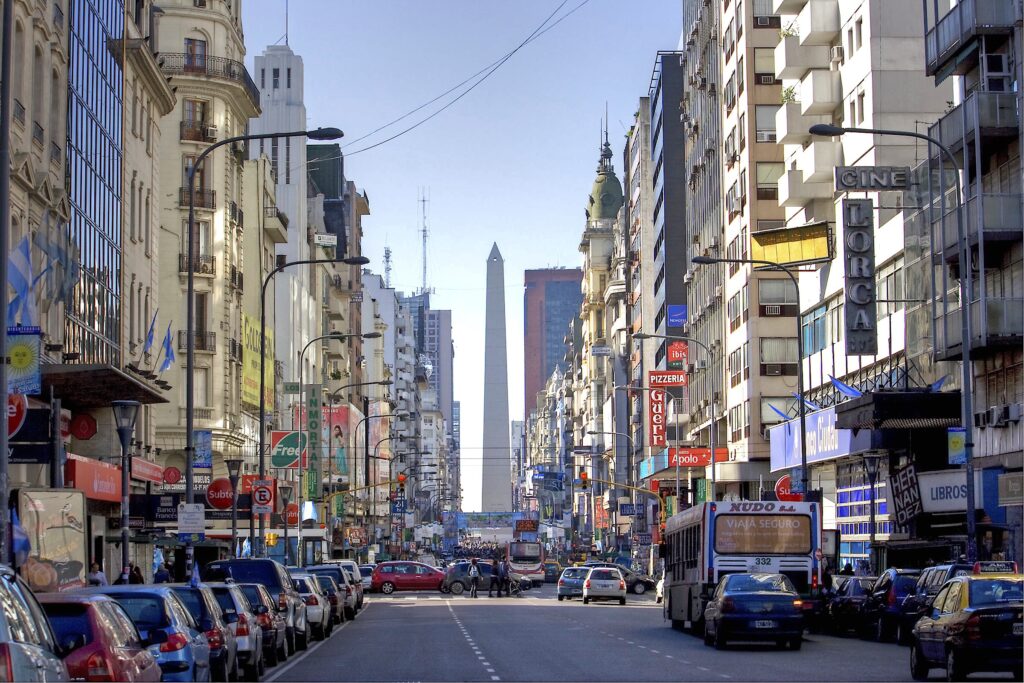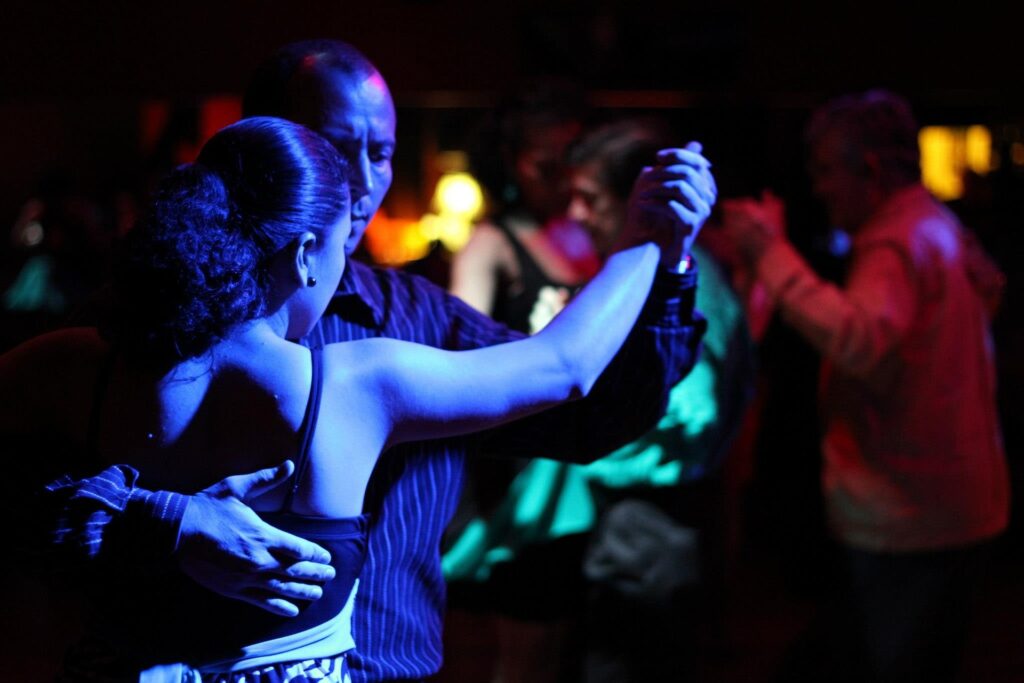When Rome Calls Buenos Aires
The Alitalia A330 lifts off from Fiumicino as Roman sunset paints the Tiber gold. Twelve hours later, I’ll touch down in a city that lives by different rules—where dinner begins at midnight, where melancholy is an art form, and where the space between two bodies can contain an entire universe of emotion.

Buenos Aires. The Paris of South America, they say. But no Parisian ever invented tango.
My seat neighbor, an elderly porteño returning from visiting grandchildren in Italy, notices my nervousness. “Primera vez?” First time? When I nod, he smiles knowingly. “Che, vas a entender por qué decimos que Buenos Aires es una ciudad que enamora.” You’ll understand why we say Buenos Aires is a city that makes you fall in love.
Arrival in the City of Fury
Jorge Newbery Airfield receives private jets, but Ezeiza International is where dreams land. The humid January air hits like an embrace as I clear customs, Argentine passport stamps mixing with the scent of café cortado and diesel exhaust. This is summer in the Southern Hemisphere—Christmas decorations still twinkle in 35-degree heat.
The taxi driver, Carlos, immediately launches into passionate discourse about Boca Juniors while navigating chaotic porteño traffic. Through the windshield, European-style architecture unfolds: French mansions in Recoleta, Italian palazzos in San Telmo, the wide boulevards that earned Buenos Aires its “Paris of the South” nickname.
But this isn’t Europe. The jacaranda trees exploding with purple blossoms, the Río de la Plata stretching toward Uruguay, the constant hum of Spanish mixed with Italian gestures—this is something entirely its own.
The Language of Bodies
Academia Nacional del Tango sits above the famous Café Tortoni on Avenida de Mayo, this institution established in 1990 to preserve Argentina’s tango heritage. The building buzzes with authentic porteño energy as locals and visitors climb to the third floor for evening classes. Professor Lillian, whose reputation in Buenos Aires tango circles is legendary, studies me with the penetrating gaze all great teachers possess.
“¿Por qué tango?” Why tango?
I explain my confusion with words, my restlessness with expression, my belief that some truths can only be communicated through movement. She nods, then places my hand on her shoulder blade.
“Tango is not about steps,” she says in accented English. “Tango is about communication. About finding the music inside another person and dancing with their soul.”
At 30 pesos (about $5 USD) for a 90-minute lesson, this is Buenos Aires’ most authentic tango education. The first lesson destroys every assumption I brought from Rome. Tango isn’t performance—it’s conversation. The leader doesn’t command; he proposes. The follower doesn’t submit; she interprets, embellishes, sometimes refuses. Every embrace becomes a negotiation, every step a question awaiting answer.
San Telmo Sundays
By my third day, Lillian suggests I venture to the Sunday market in San Telmo. “To understand tango, you must understand where it was born.”
The cobblestone streets overflow with antique vendors, street musicians, and couples dancing on every corner. Tango wasn’t invented in elegant academies—it emerged from these very streets in the 1880s, when Italian immigrants, African descendants, and native Argentines created a hybrid culture in the brothels and bars of Buenos Aires’ working-class neighborhoods.
I watch an elderly couple dance beside a statue of Carlos Gardel, their movements economical, intimate, telling the story of fifty years together. No fancy sequences, no dramatic dips—just two people breathing as one, finding the melody hidden between bandoneón and heartbeat.
A street musician plays “La Cumparsita” on violin while tourists photograph the colorful Caminito houses. But I’m drawn to a small café where locals gather around tables, sharing mates and passionate discussions about football, politics, and the proper way to prepare asado.
The Milonga Transformation
Lillian insists I attend a traditional milonga—not a tourist show, but a real social dance where porteños gather to practice the art of embrace. “La Viruta” in Palermo attracts serious dancers from across the city.
I arrive at midnight (dinner in Buenos Aires doesn’t begin until 10pm), nervous and underprepared. The dimly lit space pulses with sensual energy as couples glide across the wooden floor. The music—tango, milonga, vals—creates waves of movement that seem to breathe with collective emotion.
The codes are strict: Men stand at the edge of the floor, making eye contact with women across the room. If she accepts with a slight nod, he navigates through dancers to claim his partner. Each tanda (set of three or four songs) creates temporary intimacy between strangers.
My first invitation comes from Elena, a psychology professor who’s been dancing for thirty years. As we embrace—chest to chest, her hand on my shoulder, mine guiding her back—something fundamental shifts. We move to Di Sarli’s melancholic orchestra, her following interpretation, my leading becoming suggestion.
For four minutes, we exist as a single entity expressing emotions too complex for words. The rest of the milonga disappears. There is only the music, the embrace, and the conversation happening through minute shifts in weight, pressure, intention.
When the tanda ends, we separate with the formal “gracias” that closes every dance. But something has changed. I understand, finally, why Argentines say tango is a three-minute love affair.

The Bandoneón’s Voice
My week includes a workshop with Rodolfo, a master bandoneón player whose family immigrated from Germany (the instrument’s birthplace) in the early 1900s. His hands coax sounds from the complex accordion that seem to contain all of human experience—longing, passion, regret, hope.
“The bandoneón breathes like a person,” he explains, demonstrating how the expansion and contraction create tango’s distinctive melancholy. “It’s the voice of Buenos Aires—European sophistication with Latin American soul.”
He plays Piazzolla’s “Libertango,” the revolutionary composition that brought tango into concert halls while maintaining its street-born authenticity. The music fills the practice room with such raw emotion that several students weep openly—a perfectly Argentine response to beauty.
The Asado Ceremony
No Buenos Aires journey completes without experiencing asado, the sacred Argentine ritual of meat and fire. Through “The Asado Experience,” I’m invited to Belen’s century-old family home in Belgrano, built in 1918 and passed down through three generations.
As the official Buenos Aires tourism site explains, “preparing an asado is both the work of one person and of many.” While the asador starts the fire, everyone else opens the drinks. While the asador cuts the fat from the meat, we cut the cheese and salami.
Belen tends the parrilla with the focused intensity that defines Argentine culture. The cuts—tira de asado, colita de cuadril, entraña and vacío—come from grass-fed cattle on the endless pampas, cooked slowly over oak coals. But this isn’t just about meat—it’s about the stories shared, the mate passed hand to hand, the way strangers become family around glowing embers.
We eat at 3pm (early by Argentine standards), accompanied by Malbec from Mendoza and passionate debates about River Plate’s chances this season. As one local puts it, “an asado without anecdotes is like a football match without goals. It’s enjoyable enough, but it doesn’t meet expectations”.
“This is why we live,” Belen explains, gesturing toward the table of international guests now laughing like old friends. “Not for work, not for money. For this.”
The Return
My final evening finds me back at La Viruta, but now I move differently. The week of intensive instruction has taught me tango’s fundamental secret: it’s not about performance but about presence, not about impressing but about connecting.
I dance with María, a veterinarian; with Carmen, a retired school teacher; with Luz, a university student studying literature. Each embrace tells a different story, each dance explores new emotional territory.
As Troilo’s orchestra plays “Sur” through vintage speakers, I dance with a woman whose name I never learn but whose story I understand completely through the pressure of her hand, the way she interprets my suggestions, how she finds spaces in the music I didn’t know existed.
At 4am, the milonga ends and porteños spill onto Palermo’s streets, heading for taxi stands and late-night pizzerias. I walk through Recoleta as dawn lightens the jacaranda trees, understanding finally why Buenos Aires is called “the city that never sleeps.”
What Tango Teaches
The Alitalia flight back to Rome departs Ezeiza at noon, carrying me away from the city that rewrote my understanding of communication, intimacy, and artistic expression.
Tango taught me that the most profound conversations happen without words, that vulnerability and strength can exist in the same embrace, that melancholy isn’t sadness but a recognition of life’s beautiful complexity.
But Buenos Aires gave me something deeper: permission to live with intensity, to value relationships over achievements, to find poetry in everyday moments, and to understand that some truths can only be learned through the wisdom of bodies moving in harmony.
As we say in Buenos Aires: “Tango es una filosofía que se baila.” Tango is a philosophy that is danced.
Practical Tango: Planning Your Own Buenos Aires Dance Journey
Getting There:
- Alitalia: Rome FCO-Buenos Aires EZE (AZ681) – 12 hours direct flight
- Alternative: Lufthansa via Frankfurt or Air France via Paris
- Best season: March-May (autumn) or September-November (spring)
Tango Education:
- Academia Nacional del Tango: Located above Café Tortoni on Avenida de Mayo
- Drop-in classes: 30 pesos ($5 USD) per 90-minute lesson, Monday-Friday 6-9pm
- Alternative schools: DNI Tango, La Escuela del Tango, Vamos Academy
- Private lessons: $50-80 USD per hour with professional instructors
- Week intensive course: $200-400 USD including daily group classes
Essential Milongas:
- La Viruta (Palermo) – Young, international crowd
- Salon Canning (Barracas) – Traditional neighborhood milonga
- Club Gricel (Villa Crick) – Historic venue with strict codes
- El Beso (Centro) – Intimate setting for serious dancers
Where to Stay:
- Recoleta: Elegant neighborhood near major tango schools
- San Telmo: Historic tango district with weekend markets
- Palermo: Trendy area with restaurants and nightlife
- Budget: $40-80 USD/night for boutique hotels
Total Budget: $1,500-2,500 USD for one week including flights, accommodation, tango instruction, meals, and cultural experiences
The Argentine Truth
Buenos Aires doesn’t just teach you to dance—it teaches you to live with passion, to communicate without words, and to find beauty in melancholy. Tango becomes a metaphor for life itself: sometimes you lead, sometimes you follow, always you must listen to your partner and trust the music.
In Buenos Aires, they say the city gets into your blood. After one week of tango, I understand this isn’t poetry—it’s physiology.
Ready to discover your own tango transformation? Explore more authentic tango experiences at Tango BA